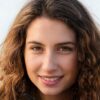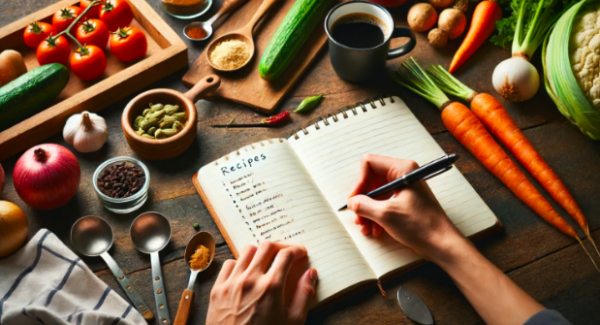Imagine you’re in the middle of a heart-pounding action scene where the hero, battered and bruised, faces off against the villain in a final showdown. You can almost feel the impact of fists meeting flesh, the scrape of boots on gravel, and the fighters’ quickening breaths as the battle intensifies. But suddenly, the momentum halts. The action slows down, weighed down by overcomplicated descriptions, and the fight loses its punch. Before you know it, you’re skimming paragraphs, eager to get back to the excitement.
Sound familiar? You’re not alone. Crafting action scenes in book writing that are as captivating to read as they are to imagine is one of the biggest challenges writers face. The good news? Writing a fight scene that leaves readers breathless doesn’t have to be a struggle.
Action scenes are crucial in many genres, from thrillers to fantasy, but according to The Guardian, poorly written action sequences are one of the top reasons readers lose interest in a book. It’s not surprising, given how easily things can go wrong—overly long sentences, too much description, or worse, clichéd fight choreography.
Your Publishing Journey Awaits – Start NowHere’s the kicker: with the right approach, your action scenes can hit as hard as the most intense battles in fiction. Lee Child, master of the thriller genre, once said, “A fight scene is not about the fight; it’s about the people involved in it.” In his Jack Reacher novels, every punch has a purpose, driving the story forward and revealing more about the characters. Stats show that well-executed action scenes aren’t just about exciting the reader; they keep them emotionally invested. Books with compelling fight scenes have a 30% higher completion rate, according to data from Author Earnings.
So, how do you craft an action scene that’s not just filler but a gripping moment that grabs your readers and won’t let go? Let’s find out!
Word Choice: The Secret Weapon for Setting the Scene
You might think the key to writing a compelling action scene is in the action, but it’s really in the words. Think of word choice like choosing weapons for battle—each word needs to hit hard and with precision.
Short, sharp words can create an urgent pace: he punched, she sprinted, they collapsed. On the other hand, long, descriptive words are more like slow-motion replays—they show the details but can kill momentum if overused.
Great authors, like Lee Child, are masters of this balance. In his Jack Reacher novels, he uses short, tight sentences during the action but slows down with detail when the dust settles. The result? You feel like you’re right there in the middle of the chaos, but you never lose track of the fight.
Pro Tip:
Cut the fluff. When characters are fighting for their lives, they’re not noticing the curtains or the song on the radio. Stick to what matters—movements, reactions, and consequences. By focusing on the character’s mind, you can enhance the emotional depth of the scene, vividly conveying both the physical and emotional aspects of their experience.
Pacing: Short Sentences Pack a Punch
Imagine watching a fight scene in slow motion—every punch takes ten seconds to land. Boring, right? The same goes for writing. Short sentences create a sense of urgency and quicken the pace, keeping your readers on their toes. Learning how to write fight scenes effectively is crucial for creating engaging and dynamic action sequences.
Take this example:
- “She swung her fist. It connected. His head snapped back.”
Now compare it to this:
- “Her hand arced through the air, fingers curled tightly as her fist connected with his jaw, sending his head flying backward in a slow-motion arc.”
Both are valid, but the first gets the adrenaline pumping. In action scenes, less is often more.
Think of your writing like a heartbeat. When characters are in danger, the heart races—and so should your prose. Short bursts of sentences mirror the chaos of the fight, keeping the reader engaged and invested. Longer sentences should be saved for the moments between blows, giving the reader a chance to catch their breath.
Fun Fact:
Even Harry Potter’s iconic fight scenes, despite being filled with magic and chaos, utilize short sentences for key moments of tension, like during Harry’s duel with Voldemort. Less is more when every spell counts. Considering multiple senses can enhance the reader’s experience of the entire fight, making it more immersive and emotionally engaging.
Show, Don’t Tell: Let Actions Reveal Character
Fight scenes aren’t just about who throws the best punch—they’re about how characters fight and reveal their true selves. The way a person fights says a lot about who they are. A well-trained martial artist will fight differently than a street brawler. A character desperate to survive will fight more frantically than one fighting for pride.
Your Publishing Journey Awaits – Start NowUse action to show us the character’s inner world. Is your character methodical, calculating each move? Or are they wild, throwing punches without care for consequences? Let their actions do the talking. In Fight Club, for instance, every punch and grunt between Tyler Durden and the narrator reveals more about their personalities and the power dynamics in play.
Crafting the Fight: The Dance of Combat
Writing a fight scene is much like choreographing a dance. Every move needs to flow naturally into the next, keeping the readers’ eyes darting across the page without losing them in the shuffle. This is where precise word choice really shines. Use action verbs like darted, crashed, flipped, and slammed to paint vivid mental images.
But remember, there’s a balance. You don’t need to describe every punch, kick, or parry in excruciating detail. Instead, focus on the turning points of the fight—the moments where power shifts, where victory seems close, only to be snatched away. Keep the big moments clear and let the reader’s imagination fill in the gaps. Additionally, consider how the environment can influence characters during a fight, shaping their actions and adding depth to the scene.
Action Scenes in Book Writing: Avoid Common Pitfalls: Too Much, Too Soon
One of the most common mistakes in writing fight scenes is over-explaining. Readers don’t need to know every single step in a martial arts sequence. If they wanted to learn judo, they’d be reading a manual, not a novel.
Instead, let the action flow naturally and focus on the emotional beats. What’s at stake? What’s going through the character’s mind as they fight? Are they scared? Confident? Desperate? Keep the scene grounded in these emotions and the action will resonate more. Balance different aspects throughout the entire fight to create an immersive and multi-sensory experience.
Also, steer clear of passive voice. Compare “His face was punched” with “She punched him in the face.” The latter feels more direct and powerful. Use active voice to keep the momentum.
Body Language: Actions Speak Louder Than Words
Fights aren’t just about fists flying—they’re about how those fists fly. Characters’ physical reactions, like flinching, sweating, or staggering, can convey exhaustion, fear, or determination. These subtle details make the scene feel real and grounded.
Body language is also a great tool for showing the power dynamics in a fight. A clenched jaw, a foot dragging across the ground, or the twitch of a hand can reveal who’s losing and who’s gaining the upper hand without needing a single word of dialogue. These physical cues can vividly convey the emotional and mental state of a character’s mind.
Remember the movie Rocky? It’s not just the punches that make the fight scenes iconic—it’s the heavy breathing, the swaying bodies, the bruised faces. Readers need that same visceral experience.
Adding Martial Arts Knowledge (Without Being a Martial Artist)
If you’re writing about martial arts, you don’t need to be a black belt to sound like you know what you’re talking about. But you should at least know the basics. Whether it’s judo, karate, or Brazilian jiu-jitsu, throwing in a few key terms like roundhouse kick, armbar, or grapple can add authenticity to your fight scenes. Just don’t overdo it—you’re writing a story, not teaching a class. Different martial arts styles can reveal how characters fight, showcasing their unique traits and motivations.
Your Publishing Journey Awaits – Start NowIf you want to delve deeper into martial arts knowledge for your action scenes, you can find great references from real-life experts or do a little research online.
The Emotional Stakes: What’s Really at Risk?
Great fight scenes aren’t just about winning or losing—they’re about what’s at stake. Is your character fighting to save a loved one? Or are they fighting for their life? Every punch should carry emotional weight. The more you tie the fight to the character’s emotional arc, the more compelling it becomes. The stakes and environment can significantly influence characters during a fight, shaping their actions and development.
Take The Hunger Games—Katniss’s every move in the arena isn’t just about survival, it’s about protecting her family, defying the Capitol, and becoming a symbol of rebellion. The emotional stakes elevate the fight from mere combat to something much more significant.

Sharpen Your Writing, One Punch at a Time
Writing action scenes is like any fight—it takes practice, precision, and the right tools. By focusing on tight word selection, pacing, and character-driven action, you can craft scenes that leave your readers breathless. Additionally, refining sentence length during the editing process is crucial, as varied sentence lengths can enhance the urgency and tension of your scenes.
And speaking of tools, why not give your manuscript the knockout punch it deserves? At Spines, we’ve helped thousands of authors polish their stories and get them ready for the world. With AI-driven tools that speed up the publishing process and expert support to guide you every step of the way, we ensure that your book is a knockout in the literary ring. So, if you’re ready to turn your fight scenes into bestsellers, visit Spines and start your publishing journey today.
Your readers are waiting for that final blow—are you ready to deliver it?
With Spines, publishing isn’t just an action scene; it’s an adventure. Let’s get your story in fighting shape.
Your Publishing Journey Awaits – Start Now







